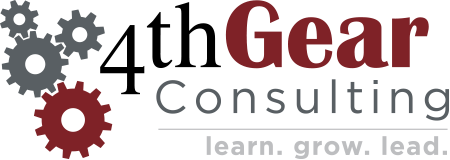I started 4th Gear Consulting back in 2009 because I thought we needed more leaders. As I’ve worked with executives, business owners, teams and companies I continue to learn what is driving our collective lack of leaders. As a rule, when it comes to leadership, we aren’t very good at defining it, setting expectations around it, coaching for it, measuring it, or being responsible for it. We often measure leaders by outputs that are not representative of leadership and we have not adapted to use some of the new tools and concepts available to us to more effectively define and measure leadership. If we really want to encourage people to lead inside our business or organization we must use a few new metrics to help define and measure what success looks like for a leader. This is not to say that we stop measuring results like revenue and profit, but those measurements alone can lead to abysmal leadership for the sake of the numbers. And that’s just not sustainable. Add these three measurements to your leadership assessments and focus on building phenomenal leaders who can drive the other numbers:
Employee Engagement
Over the past decade there have been dozens of tools and surveys created to measure employee engagement. It has also been shown in countless studies that teams of fully engaged employees are more productive, more profitable and more sustainable than teams of moderately engaged or disengaged employees. I have encountered many managers along the way who get great financial results for a few years while killing the engagement and morale on their team. Ultimately these are very messy situations to fix and to clean up and a lot of great people leave the organization along the way. The toxic manager ends up being fired and it takes years to repair the damage. More importantly, we often don’t fix the systemic issues that led us to leave that manager in place long enough to do that much damage. Measure the engagement of the people on any leader’s team on a regular basis and that will never happen in your business.
Talent Growth
Every manager should have a talent map that shows the performance and potential of every employee, their individual performance and development goals (including the ones they set for themselves and not just the ones we tell them to have), and their progress over time against these things. Leaders are responsible for improving performance and capability on their team. Tracking that progress for each individual can be done fairly easily and we can now see how successful they are at coaching their people in a way that helps them get better, accomplish more, and become more capable. If people stay where they are on the talent map, that’s not leadership. Looking at their leadership progress over time through the growth of their team helps define what good leaders do and measure it based on things the leader can control and should be affecting every single day.
Successful Promotions or Progress
Years ago I worked for an exceptional leader and sales manager. When I received a promotion into the home office, (which he incidentally encouraged me to work towards because he saw my passion and focus on learning and leadership more clearly than I did) I arrived to find that there were 5 of us in the home office that had worked for that same manager. This guy had a track record of helping people move toward their full potential and improving their capability until they were ready for the next level. Some managers might think that he hurt his sales team by encouraging some of his best people to move into higher level roles but that wasn’t the case. He developed and coached everyone on the team consistently and was often on the top of any sales performance list. As leaders our job is not just to help people perform their current set of duties well but also to push them, challenge them, and help them build the capability needed to perform well at the next level. If we measured leaders by how many members of their team successfully grew within the business, whether it was a promotion, a special project, a new responsibility, we would more accurately assess leadership in our business.
If we expect better leadership in our business we have to decide what that means, set clear expectations, develop our people to become better leaders and yes, measure a different set of outcomes. Many managers can increase revenue or profit in unsustainable ways that lead to burnout, disengagement and eventually, lower revenue and profit. Leaders build strong, growing, sustainable teams that consistently improve, adapt and innovate to be more successful. You choose what you want by choosing what you invest in and how you define success.
Leading Through Influence
We develop better leaders so they can build a better future. Contact Us to learn about leader development via our training, workshops and executive coaching.


